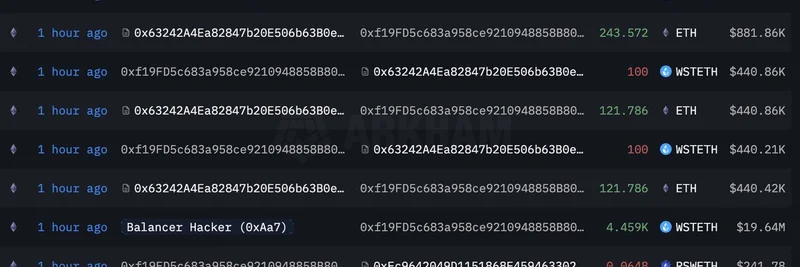Hey everyone, if you've been scrolling through crypto Twitter lately, you might have caught this tweet from BSCNews highlighting Kaspa's dramatic scalability improvements in 2025. They're asking a key question: with network upgrades rolling out earlier this year, does Kaspa's native token, $KAS, stand to gain? As someone who's been deep in the crypto world, let's break this down in simple terms. We'll cover what Kaspa is, its tech, those upgrades, token economics, and what it all means for $KAS.
Unpacking Kaspa: The Basics
Kaspa isn't your typical blockchain—it's built on something called blockDAG, which stands for Block Directed Acyclic Graph. Think of it like this: traditional blockchains like Bitcoin process blocks one at a time, like cars in a single-lane highway. Kaspa, on the other hand, allows multiple blocks to be processed in parallel, more like a multi-lane freeway. This setup lets it handle way more transactions without losing decentralization or security.
Launched back in November 2021, Kaspa prides itself on a fair start—no pre-mines, no ICOs, no special allocations for devs or founders. Everything comes from mining, making it one of the most equitably distributed cryptos out there. As of now, it's a proof-of-work (PoW) coin, similar to Bitcoin, but with tweaks for speed and efficiency.
This meme from the thread captures the community's vibe: Bitcoin as the old guard (gold), with Kaspa emerging as the faster, more efficient alternative (silver).
The Tech Behind $KAS: BlockDAG and Mining
At its core, Kaspa uses the GHOSTDAG protocol, which is what enables that parallel block processing. This year, we've seen some major boosts—network optimizations in October 2025 pushed transaction speeds to over 1,800 TPS (transactions per second), with peaks hitting 5,705 TPS. That's insane compared to Bitcoin's 7 TPS or even Ethereum's 15-30 TPS post-upgrades.
Mining has evolved too. Starting with CPUs, it moved to GPUs, FPGAs, and now ASICs (specialized mining hardware). The kHeavyHash algorithm keeps things energy-efficient, so miners aren't burning through electricity like some other PoW chains. Current network hashrate? A whopping 1,200 PH/s, showing serious commitment from the mining community.
One cool aspect is the rapid block times—multiple per second—which evens out rewards and reduces the dominance of big pools, keeping things decentralized.
2025 Upgrades: Scaling to New Heights
The tweet mentions network upgrades earlier this year, and boy, have they delivered. Key highlights include:
BlockDAG Optimizations (October 2025): These tweaks supercharged throughput, making Kaspa one of the fastest PoW blockchains. Sources like CoinMarketCap's AI insights report it surpassing many competitors in speed.
DAGKNIGHT Upgrade: Teased in October and nearing launch, this protocol enhances security and efficiency. Check out OurCryptoTalk's blog for the details—it's set to make Kaspa even more robust against attacks.
Smart Contract Support: Early 2025 brought KRC-20 tokens and steps toward EVM compatibility, opening doors to DeFi and NFTs on Kaspa. This could explode adoption, as noted in InvestingHaven's analysis.
Looking ahead, Kaspa's roadmap for 2025-2026 includes zero-knowledge bridges, reverse MEV auctions, and oracle voting—fancy terms for making the network smarter and more interconnected. You can read more on the official Kaspa site.
These changes aren't just tech jargon; they mean faster, cheaper transactions, which could attract more users and dApps, boosting demand for $KAS.
This chart meme from a reply sums up the optimism—Kaspa's price action looks like it's just getting started on an upward trajectory.
Tokenomics: How $KAS Works
$KAS is the fuel of the Kaspa network—used for transaction fees, mining rewards, and soon, smart contracts. Total supply is capped at 28.7 billion, with about 25.88 billion already circulating as of March 2025 (and likely more now). That's over 90% mined, so inflation is low and dropping.
Unlike Bitcoin's sharp halvings every four years, Kaspa smooths it out with monthly reductions—halving annually but gradually. Current block reward? Around 61 KAS per block, heading down to tiny amounts by 2037.
What makes it fair: No insider dumps possible since everything's mined publicly. This scarcity, combined with growing utility, could drive value up as demand rises.
Here's a fun meme comparing supplies: It takes about 1,366 KAS to match the scarcity of 1 BTC based on max supplies. Bitcoin as gold, Kaspa as silver—efficient and abundant but valuable.
Does $KAS Benefit from These Changes?
Absolutely, and here's why. With scalability solved (or close to it), Kaspa can handle real-world use like payments or DeFi without the congestion plaguing others. Community governance keeps it decentralized, and the meme-like hype in threads (like fast transactions with "no waiting, no stress") shows grassroots support.
Price-wise, as of May 2025, it was around $0.10 with a $2.7B market cap (Forbes article). If upgrades bring more adoption, we could see it climb, especially if it hits EVM full-on and taps into Ethereum's ecosystem.
But remember, crypto's volatile—do your own research. If you're into mining, Kaspa's still accessible; check out 2Miners' updates for pool info.
Wrapping Up: Kaspa's Place in Crypto
Kaspa's $KAS isn't just another coin; it's a tech play solving the blockchain trilemma (speed, security, decentralization) in a PoW world. The 2025 upgrades have set the stage for growth, and if the community memes are any indication, excitement is building.
This comparison table from the thread nails it—Kaspa checks boxes others don't, like being fast and scalable while staying decentralized.
If you're a blockchain practitioner looking to level up, dive into Kaspa's docs or join the conversation on X. Who knows, $KAS might just be the next big thing in efficient crypto. What do you think—bullish on Kaspa? Let us know in the comments!



